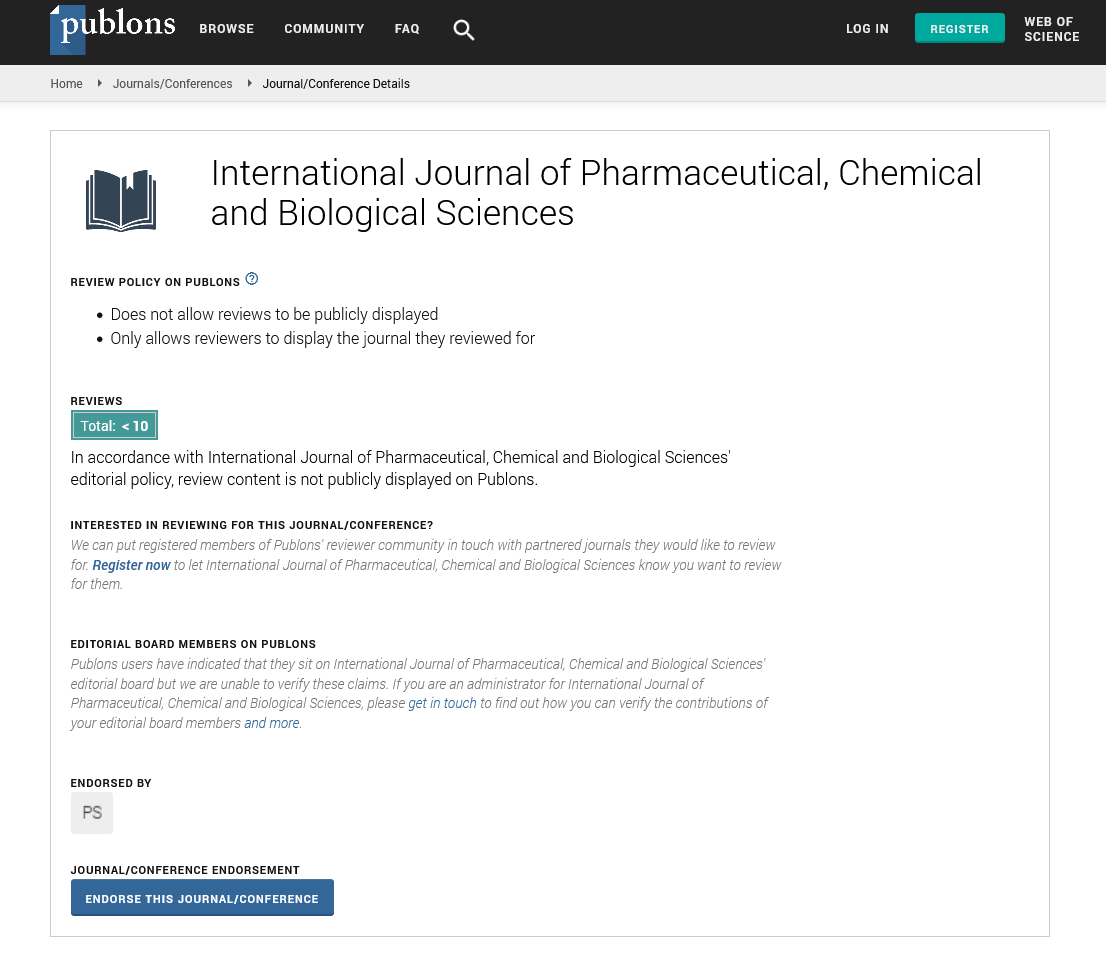Short Communication - International Journal of Pharmaceutical, Chemical and Biological Sciences ( 2024) Volume 14, Issue 1
Exploring the Intricacies of Biochemistry: Understanding the Molecular Machinery of Life
Harvey Ken*Harvey Ken, Department of Chemistry, University of Edinberg, UK,
Received: 28-Feb-2024, Manuscript No. ijpcbs-24-131341; Editor assigned: 01-Mar-2024, Pre QC No. ijpcbs-24-131341 (PQ); Reviewed: 15-Mar-2024, QC No. ijpcbs-24-131341; Revised: 20-Mar-2024, Manuscript No. ijpcbs-24-131341 (R); Published: 27-Mar-2024, DOI: DOI: 10.36648/2471-9668-14.1.5
Introduction
Biochemistry, often termed as the chemistry of life, delves into the intricate molecular processes that govern living organisms. From the fundamental building blocks of cells to the complex metabolic pathways that sustain life, biochemistry unravels the mysteries of biological systems at the molecular level. This multidisciplinary field merges principles from biology and chemistry to elucidate the structures, functions, and interactions of biomolecules. In this comprehensive exploration, we delve into the captivating world of biochemistry, elucidating its fundamental concepts, applications, and significance in understanding life processes. At the heart of biochemistry lies the study of biomolecules. These biomolecules are classified into four major categories: Carbohydrates, lipids, proteins, and nucleic acids. Carbohydrates serve as primary sources of energy and structural components in cells. Composed of carbon, hydrogen, and oxygen atoms, carbohydrates exist in various forms, including monosaccharides, disaccharides, and polysaccharides. Lipids encompass a diverse group of molecules characterized by their hydrophobic nature. Proteins are macromolecules composed of amino acid residues linked by peptide bonds. They play essential roles in nearly every biological process, serving as enzymes, structural elements, hormones, antibodies, and transporters. Nucleic acids, such as Deoxyribonucleic Acid (DNA) and Ribonucleic Acid (RNA), store and transmit genetic information. DNA carries the genetic instructions for cellular functions, while RNA plays roles in protein synthesis and gene regulation.
Description
The central dogma of molecular biology elucidates the flow of genetic information within a biological system. It describes the sequential processes of DNA replication, transcription, and translation. During DNA replication, the double-stranded DNA molecule unwinds, and each strand serves as a template for the synthesis of a new complementary strand. This process ensures the faithful transmission of genetic information during cell division. Transcription is the process by which the genetic information encoded in DNA is copied into RNA molecules. RNA polymerase catalyzes the synthesis of RNA strands using one of the DNA strands as a template. Translation converts the information encoded in RNA into the amino acid sequence of a protein. This process occurs on ribosomes, where Transfer RNA (tRNA) molecules deliver amino acids in response to codons on the messenger RNA (mRNA) molecule. Enzymes are biological catalysts that accelerate chemical reactions within cells, facilitating cellular processes with remarkable efficiency. These proteinaceous molecules exhibit specificity for their substrates and operate under mild physiological conditions. Enzymes lower the activation energy required for a chemical reaction, thereby increasing the reaction rate. They achieve this by stabilizing the transition state of the reaction, facilitating the formation of products. Enzyme activity is tightly regulated to maintain cellular homeostasis. Regulation can occur through various mechanisms, including allosteric regulation, covalent modification, and feedback inhibition [1-4].
Conclusion
In conclusion, biochemistry serves as the cornerstone of modern biology, offering invaluable insights into the molecular processes that govern life. From the elucidation of biomolecular structures to the unraveling of metabolic pathways, biochemistry continues to enrich our understanding of biological systems and shape advancements in medicine, biotechnology, and beyond. In essence, the study of biochemistry illuminates the intricate tapestry of life at the molecular level, paving the way for transformative discoveries and applications in the quest for knowledge and human well-being.
Acknowledgement
None.
Conflict Of Interest
None.
References
- Kennedy MB. Biochemistry and neuroscience: The twain need to meet. Curr Opin Neurobiol 2017; 43:79-86.
[Crossref] [Google Scholar] [PubMed]
- Schepartz A. Introducing "future of biochemistry: The international issue". Biochemistry 2019; 58:1-6.
[Crossref] [Google Scholar] [PubMed]
- Brenner S. Biochemistry strikes back. Trends Biochem Sci 2000; 25:584.
[Crossref] [Google Scholar] [PubMed]
- Wood EJ. Biochemistry and molecular biology teaching over the past 50 years. Nat Rev Mol Cell Biol 2001; 2:217-221.
[Crossref] [Google Scholar] [PubMed]

